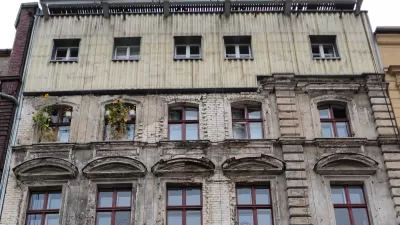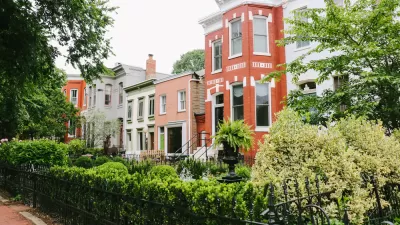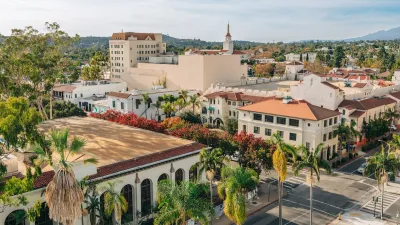How can cities balance the benefits of historic preservation with the need for new housing?

In Sightline, Dan Bertolet argues against "overzealous or misplaced" historic preservation rules that restrict new, dense housing, especially in cities with housing shortages.
"Historic preservation, when it interferes with homebuilding, can worsen a city's shortage of homes, driving up rents and pushing out low-income residents," he writes. "If cities aren't careful, their historic preservation regulations can function as exclusionary zoning." (That dynamic, as it played out in in Columbus, Ohio, was captured as part of Laura Poitras's 2003 documentary Flag Wars.)
Bertolet acknowledges the array of benefits, including economic benefits, linked to preserving cultural resources. In the case that sparked his concern, a 200-unit transit-adjacent building was rejected, not because it would have demolished a historic building, but because it would have been taller than the surrounding historic neighborhood. He delves into a number of examples in Seattle, and proposes an overarching solution:
The ideal, longer-term fix entails establishing a housing “budget”: every preservation ruling that causes a number of homes not to be built would require an offsetting change in zoning elsewhere in the same neighborhood to allow construction of the same number of new homes. In this way, historic preservation would operate under the principle of no net loss of homes.
FULL STORY: http://www.sightline.org/2017/12/19/when-historic-preservation-clashes-with-housing-affordability/

Study: Maui’s Plan to Convert Vacation Rentals to Long-Term Housing Could Cause Nearly $1 Billion Economic Loss
The plan would reduce visitor accommodation by 25,% resulting in 1,900 jobs lost.

North Texas Transit Leaders Tout Benefits of TOD for Growing Region
At a summit focused on transit-oriented development, policymakers discussed how North Texas’ expanded light rail system can serve as a tool for economic growth.

Using Old Oil and Gas Wells for Green Energy Storage
Penn State researchers have found that repurposing abandoned oil and gas wells for geothermal-assisted compressed-air energy storage can boost efficiency, reduce environmental risks, and support clean energy and job transitions.

Private Donations Propel Early Restoration of Palisades Playground
Los Angeles has secured over $1.3 million in private funding to restore the Pacific Palisades playground months ahead of schedule, creating a modern, accessible space that supports community healing after recent wildfires.

From Blight to Benefit: Early Results From California’s Equitable Cleanup Program
The Equitable Community Revitalization Grant (ECRG) program is reshaping brownfield redevelopment by prioritizing projects in low-income and environmental justice communities, emphasizing equity, transparency, and community benefits.

Planting Relief: Tackling Las Vegas Heat One Tree at a Time
Nevada Plants, a Las Vegas-based nonprofit, is combating the city’s extreme urban heat by giving away trees to residents in underserved neighborhoods, promoting shade, sustainability, and community health.
Urban Design for Planners 1: Software Tools
This six-course series explores essential urban design concepts using open source software and equips planners with the tools they need to participate fully in the urban design process.
Planning for Universal Design
Learn the tools for implementing Universal Design in planning regulations.
Ascent Environmental
Borough of Carlisle
Institute for Housing and Urban Development Studies (IHS)
City of Grandview
Harvard GSD Executive Education
Toledo-Lucas County Plan Commissions
Salt Lake City
NYU Wagner Graduate School of Public Service





























